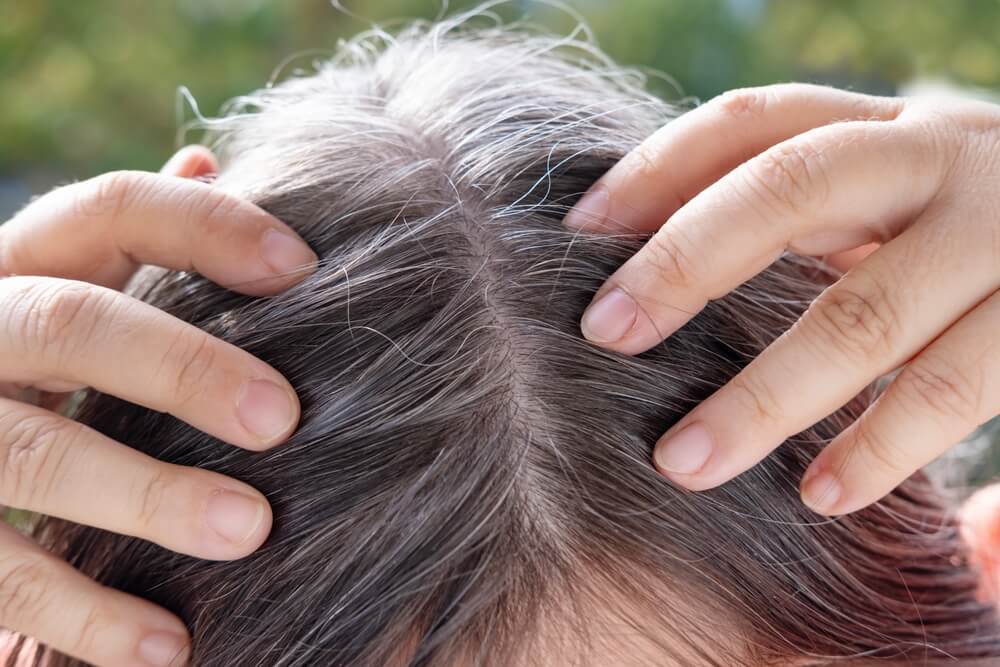Every strand of hair on our heads is a silent testimony to our chronological age and unique personal story. Yet, for a growing subset of teens and young adults, those strands whisper an entirely different tale: that of premature graying. This phenomenon, characterized by the early onset of gray or silver locks, can be understandably disconcerting for individuals in their adolescent years or early twenties, including those experiencing gray hair as a teenager.
Contrary to popular belief, premature graying, while it less frequently affects teens, isn’t a rare occurrence nor a cause for grave concern. It’s crucial to comprehend that the premise “graying equals aging” is a generalization, not a rule. Color changes in hair occur due to a complex interplay of genetic, hormonal, and environmental factors. Thus, plenty of teens sport silver strands without any significant health implications.
Seeing gray hair sparkle among the dark tresses of teens may raise an eyebrow: it’s intriguing, frequently misunderstood, and often unnecessarily stigmatized, especially when it comes to gray hair in kids. In this light, engaging in an attempt to understand what causes white hair at an early age, its implications, and effective management strategies for premature gray hair in children is beneficial for the youngsters affected and their caregivers. If you’re one such individual or simply curious about this little-explored aspect of hair health, read on for an in-depth discussion.
General Pediatric Care in Plantation and Doral, Florida, is here to provide support and guidance for families navigating the complexities of adolescent health. Whether it’s understanding the nuances of premature graying or addressing any other health concerns, our team is dedicated to offering thorough and compassionate medical care. So, if you or your loved ones need assistance, do not hesitate to contact us.
Possible Causes of Premature Graying
When teenage gray strands or premature gray locks appear, it might be alarming for the teen and their parents. Let’s dive deep into the intrinsic and extrinsic factors that can contribute to early hair color loss and youthful silver locks.
Intrinsic Factors Contributing to Early Graying in Teens
Early graying hair is usually an interplay of genetic and hormonal factors in adolescence. Genetically, if someone in the family has prematurely gray hair, the teen is more likely to follow suit due to hereditary traits. This is seen particularly when both parents started graying at a young age. Besides genetics, gray hair in kids can also result from hormonal changes during puberty. Over time, hair follicles lose their ability to produce as much melanin, the pigment that gives hair its color, leading to silver or gray strands even in youngsters. Early onset gray hair due to intrinsic factors is beyond anyone’s control.
External Environmental Factors and How They Can Play a Role
Premature gray hair in children isn’t always hereditary. Environmental factors also significantly contribute to graying hair in teens. Smoking is one of the prevailing factors known to accelerate hair aging in youth. High exposure to environmental pollution, harmful UV radiation, and certain chemical substances also adversely affect the health of hair follicles, leading to premature hair discoloration.
Furthermore, a diet lacking essential vitamins and minerals such as Vitamin B12, iron, and copper can also cause premature gray hair in children. Similarly, chronic stress has also been linked to premature graying, as it promotes oxidative stress that damages hair cells. Careful management of these external factors can be crucial in postponing the onset of gray hair in children.
Impacts on Social and Psychological Well-being
Early graying hair may not impact physical health, but for kids with gray hair, it can profoundly affect their social and psychological well-being. Let’s delve into the emotional responses, coping mechanisms, societal perceptions, and stigma surrounding premature graying in youngsters.
Emotional Responses and Coping Mechanisms
Premature gray locks can elicit a range of emotions in teens, from surprise and confusion to frustration, embarrassment, and, occasionally, distress. Since hair aesthetics are frequently equated with beauty standards, early hair color loss can be emotionally challenging for many young people. Youthful silver locks often alienate teens from their peer groups, significantly impairing their self-confidence. Effective coping mechanisms are, therefore, essential to counter negative emotional responses. These could include acknowledging and discussing their feelings, seeking support from trusted adults or peers, consulting with healthcare professionals, and exploring desirable cosmetic solutions.
Societal Perceptions and Stigma Around Premature Graying in Teens
In a society where youth is often celebrated and associated with vibrancy and colored hair, graying hair in the twenties or even teens can be stigmatized. This premature hair graying may become a source of unsolicited attention, judgment, or teasing, leading to isolation among affected youngsters. Establishing a dialogue about the normalcy and humane understanding of early onset gray hair can combat these societal stereotypes. Reinforcing the idea that gray hair in teens or young people is just natural hair transitioning, not an anomaly, could be key to dismantling these stigmas and fostering inclusivity.
Options for Management and Treatment
In the face of early onset gray hair and premature hair discoloration, it’s crucial to remember there are several ways to manage and treat these conditions. The solutions range from medical interventions to non-medical approaches, including strategic lifestyle changes.
Medical Interventions and Their Efficacy
Many medical interventions are available for premature graying, including options for addressing gray hair in kids. Medical experts might prescribe certain vitamins and minerals to replenish deficiencies leading to hair color loss. In addition, topical applications and supplements aimed at re-pigment gray hair are available on the market. However, teens and their caregivers need to understand that no medical intervention guarantees complete reversal of graying hair – it mainly aims at slowing down the process or concealing gray strands. Always consult a reliable healthcare professional or dermatologist when considering medical treatments to avoid any unforeseen complications.
Non-medical approaches, including Lifestyle Changes
Managing gray hair at a young age isn’t just about medical intervention. Lifestyle changes can also significantly alter the extent of premature graying. One practical approach is maintaining a balanced diet rich in copper, vitamins, and proteins – fundamental for hair health and color maintenance. Both second-hand and active smoking can aggravate premature graying; hence, avoiding tobacco is recommended. Moreover, stress management, regular exercise, and adequate sleep can play a pivotal role in maintaining hair health. Hair dyes and cosmetic products also offer temporary relief for kids with gray hair, adding visual variety and boosting self-confidence in social settings.

Embracing the Gray and Cultivating Understanding
Early graying hair or premature silver locks can be challenging for teens, given the significant emotional and social sentiments attached to it. It’s important to emphasize that while premature graying is usually harmless from a health perspective, it’s wise to consult with healthcare professionals if gray locks appear unexpectedly in the young. Medical advice is invaluable in identifying any potential underlying issues and exploring treatment options. Furthermore, healthcare professionals can guide managing emotional responses, reinforcing that silver strands don’t define worth or attractiveness but contribute to uniqueness.
As a society, encouraging an open dialogue around early onset gray hair is essential for fostering better understanding, reducing stigma, and supporting affected individuals. Gray hair in teens or young adults should not cause embarrassment or be subject to ignorant judgments.
Instead, embracing this natural progression can strengthen body positivity and acceptance. For those of you with gray hair at a young age, remember, your hair doesn’t define you. It’s a small, uniquely colored part of a much larger, varied, and vibrant you. You are not alone in this journey, and an entire community of those with early graying hair shifting from embarrassment to embracing and flaunting their silver locks with elegance and pride.
If you’re seeking guidance or support on navigating the complexities of premature graying or any other adolescent health concerns, remember that Worldwide Pediatrics Group is here for you. Our team is dedicated to providing thorough and compassionate medical care from birth through adulthood. Don’t hesitate to reach out to us for assistance



